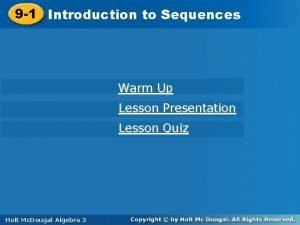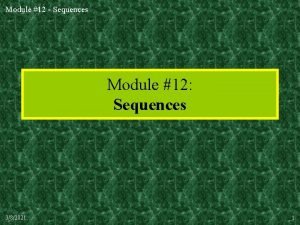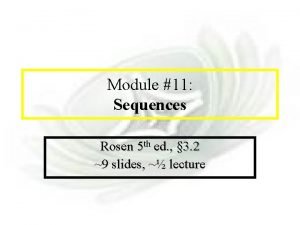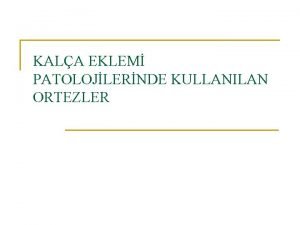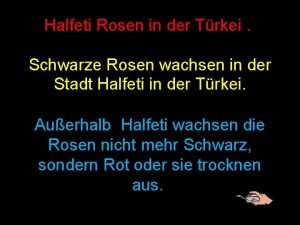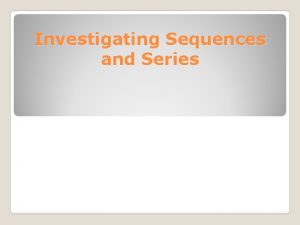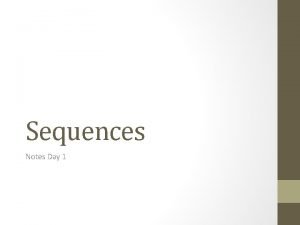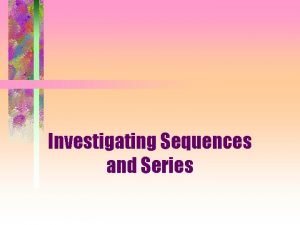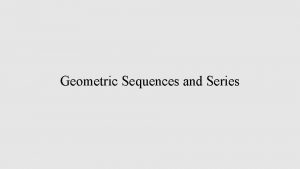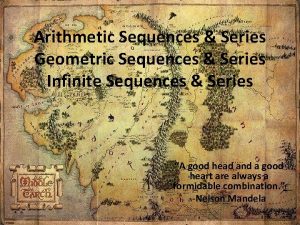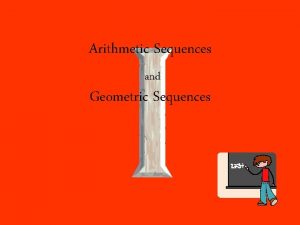Module 11 Sequences Module 11 Sequences Rosen 5










- Slides: 10

Module #11 - Sequences Module #11: Sequences Rosen 5 th ed. , § 3. 2 ~9 slides, ~½ lecture 2020/9/18 (c)2001 -2003, Michael P. Frank 1

Module #11 - Sequences § 3. 2: Sequences & Strings • A sequence or series is just like an ordered n -tuple, except: – Each element in the series has an associated index number. – A sequence or series may be infinite. • A summation is a compact notation for the sum of all terms in a (possibly infinite) series. 2020/9/18 (c)2001 -2003, Michael P. Frank 2

Module #11 - Sequences • Formally: A sequence or series {an} is identified with a generating function f: S A for some subset S N (often S=N or S=N {0}) and for some set A. • If f is a generating function for a series {an}, then for n S, the symbol an denotes f(n), also called term n of the sequence. • The index of an is n. (Or, often i is used. ) 2020/9/18 (c)2001 -2003, Michael P. Frank 3

Module #11 - Sequences Sequence Examples • Many sources just write “the sequence a 1, a 2, …” instead of {an}, to ensure that the set of indices is clear. – Our book leaves it ambiguous. • An example of an infinite series: – Consider the series {an} = a 1, a 2, …, where ( n 1) an= f(n) = 1/n. – Then {an} = 1, 1/2, 1/3, … 2020/9/18 (c)2001 -2003, Michael P. Frank 4

Module #11 - Sequences Example with Repetitions • Consider the sequence {bn} = b 0, b 1, … (note 0 is an index) where bn = ( 1)n. • {bn} = 1, 1, … • Note that {bn} denotes an infinite sequence of 1’s and 1’s, not the 2 -element set {1, 1}. 2020/9/18 (c)2001 -2003, Michael P. Frank 5

Module #11 - Sequences Recognizing Sequences • Sometimes, you’re given the first few terms of a sequence, and you are asked to find the sequence’s generating function, or a procedure to enumerate the sequence. • Examples: What’s the next number? – 1, 2, 3, 4, … 5 (the 5 th smallest number >0) – 1, 3, 5, 7, 9, … – 2, 3, 5, 7, 11, . . . 11 (the 6 th smallest odd number >0) 13 (the 6 th smallest prime number) 2020/9/18 (c)2001 -2003, Michael P. Frank 6

Module #11 - Sequences The Trouble with Recognition • The problem of finding “the” generating function given just an initial subsequence is not well defined. • This is because there are infinitely many computable functions that will generate any given initial subsequence. • We implicitly are supposed to find the simplest such function. But there is no objective right answer! 2020/9/18 (c)2001 -2003, Michael P. Frank 7

Module #11 - Sequences What are Strings, Really? • This book says “finite sequences of the form a 1, a 2, …, an are called strings”, but infinite strings are also used sometimes. • Strings are often restricted to sequences composed of symbols drawn from a finite alphabet. 2020/9/18 (c)2001 -2003, Michael P. Frank 8

Module #11 - Sequences Strings, more formally • Let be a finite set of symbols, i. e. an alphabet. • A string s over alphabet is any sequence {si} of symbols, si , indexed by N or N {0}. • If a, b, c, … are symbols, the string s = a, b, c, … can also be written abc …(i. e. , without commas). • If s is a finite string and t is a string, the concatenation of s with t, written st, is the string consisting of the symbols in s, in sequence, followed by the symbols in t, in sequence. 2020/9/18 (c)2001 -2003, Michael P. Frank 9

Module #11 - Sequences More String Notation • The length |s| of a finite string s is its number of positions (i. e. , its number of index values i). • If s is a finite string and n N, sn denotes the concatenation of n copies of s. • denotes the empty string, the string of length 0. • If is an alphabet and n N, n {s | s is a string over of length n}, and * {s | s is a finite string over }. 2020/9/18 (c)2001 -2003, Michael P. Frank 10


